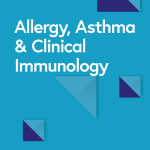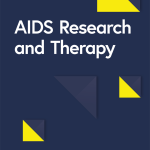As a result of the widespread use of CDK4/6 inhibitors and increasing awareness among healthcare providers, the number of AEs reported has escalated over the years. As a result, there is an ongoing need for epidemiologic surveillance. Currently, there is a lack of head-to-head studies comparing the three different CDK4/6 inhibitors. Therefore, this study serves as the first comprehensive comparison of real-world AE reports for CDK4/6 inhibitors and provides a valuable reference point. Based on real-world data, healthcare professionals should be aware of the following aspects:
This study describes the most common AEs associated with each CDK4/6 inhibitor were coincidence with the information provided in the FDA labeling. The most frequently reported adverse reactions associated with palbociclib include neutropenia, infections, leukopenia, fatigue, and nausea [21]. The most common adverse reactions attributed to ribociclib, including laboratory abnormalities, are myelosuppression and abnormal liver function [22]. Similarly, the most common adverse reactions associated with abemaciclib include diarrhea, neutropenia, nausea, abdominal pain, and infection [23]. A comparative analysis and discussion of the AEs of these three CDK4/6 inhibitors are presented, categorized according to the main organ systems affected.
The main AEs associated with CDK4/6 inhibitors primarily involve hematologic toxicity, leading to a decrease in blood cell counts across different lineages. Notably, the RORs for palbociclib and ribociclib were higher than those for abemaciclib, and serious systemic infections were infrequent, which aligns with prior literature [24]. Hematologic toxicity, the most common AE of CDK4/6 inhibitors, is mainly associated with their ability to inhibit CDK6, a crucial regulator of hematopoietic precursor proliferation [25, 26]. Palbociclib exhibits comparable potency for both CDK4 and CDK6, whereas abemaciclib demonstrates a higher affinity for CDK4 [25, 27], resulting in relatively lower hematologic toxicity. Furthermore, the neutropenia induced by CDK4/6 inhibitors is mostly associated with their inhibitory influence on the cell cycle, differing from chemotherapy-induced DNA damage and subsequent induction of apoptosis in hematopoietic cells [28], thereby reducing the likelihood of severe infections. Notable disparities in hematologic toxicity exist among the three drugs. Therefore, physicians should administer palbociclib and ribociclib for three weeks, followed by a one-week break to promote the restoration of hematopoietic progenitor cells, while they can prescribe abemaciclib continuously. Although uncommon, severe infections are possible. The research uncovered 21 instances of serious infections, such as bacteremia and sepsis, in patients taking abemaciclib compared to only 3 cases in those who received ribociclib. Therefore, it is imperative to conduct regular monitoring of routine blood parameters when using CDK4/6 inhibitors and to provide prompt intervention in cases of severe neutropenia.
The risk signal intensity for gastrointestinal diseases associated with abemaciclib appears to be higher in comparison to ribociclib and palbociclib in gastrointestinal disorders. This difference may be attributed to the inhibition of the glycogen synthase kinase 3-mediated cascade [29]. Although the majority of these adverse effects are mild, they can have a significant impact on the quality of life of patients. Therefore, it is imperative to provide comprehensive medication education before administration, especially for abemaciclib, and to recommend initiating loperamide treatment once loose stools occur [30, 31].
Regarding liver and renal damage, both ribociclib and abemaciclib have reported seven AE signals related to liver function as well as renal damage, including elevated levels of alanine aminotransferase (ALT), aspartate aminotransferase (AST), gamma-glutamyltransferase, and blood bilirubin, among others. The disproportionation analysis according to ‘Drug-related hepatic disorders’ criteria in Standardized MedDRA Queries (SMQ) also showed the same results (Supplementary Table 1). The ROR value and the number of cases for ribociclib were generally higher than those for abemaciclib, which is in line with existing literature [32,33,34]. The differences in liver-associated side effects among the three CDK4/6 inhibitors can be attributed to the fact that ribociclib and abemaciclib are mainly metabolized by the liver enzyme CYP3A4, while palbociclib goes through metabolism by CYP3A4 and Sulfotransferase Family 2 A Member 1 (SULT2A1) enzymes [35]. Most oral endocrine therapy drugs, typically used in conjunction with CDK4/6 inhibitors for patients suffering from advanced breast cancer with HR(+)/HER2(−) markers, are primarily metabolized by the liver and may cause liver toxicity. Additionally, instances of life-threatening AEs linked to liver failure have been documented for both ribociclib and abemaciclib. Therefore, patients with pre-existing liver conditions or those at risk of liver toxicity should avoid using CDK4/6 inhibitors. Alternatively, they can prioritize the use of palbociclib. Furthermore, it is essential to monitor liver function regularly in such cases. According to the literature, abemaciclib inhibits the secretion of tubular transporters but does not affect glomerular function [28]. However, our study found that ribociclib was associated with decreased glomerular filtration rates. As a precautionary measure, patients with renal insufficiency should avoid using ribociclib and exercise caution with abemaciclib.
For the cardiovascular system, among the AE risk signals associated solely with ribociclib, the most commonly reported in relation to the cardiovascular system was QT prolongation (n = 593, ROR = 13.04). Ribociclib has previously been linked to a reversible, concentration-dependent prolongation of the Qt interval [28]. Furthermore, our study uncovered cases of AEs related to the cardiovascular system, including hypertensive crisis and abnormal electrocardiogram findings. These findings emphasize the need for caution when administering ribociclib to patients with pre-existing cardiovascular diseases, or electrolytes abnormality [31]. These patients should also refrain from using drugs known to cause QT interval prolongation. In our study, abemaciclib demonstrated a higher number of risk signals associated with venous thrombosis, and the ROR was also elevated. Additionally, risk signals for vena cava thrombosis were observed with ribociclib as well. Notably, a meta-analysis indicated that among the three CDK4/6 inhibitors, only abemaciclib exhibited an increased risk of arterial thrombosis, while ribociclib did not show a statistically significant increase, although 10 cases were reported [36]. This discrepancy may be attributed to the limited sample size of randomized controlled trials included in the meta-analysis, which might not provide sufficient evidence to support a significant difference in risk between the ribociclib intervention group and the control group. Nevertheless, several studies have highlighted cardiovascular toxicities, such as myocardial infarction, associated with CDK4/6 inhibitors such as ribociclib [37]. Breast cancer patients undergoing endocrine therapy and chemotherapy already carry a high risk of thrombosis, and the addition of CDK4/6 inhibitors may further elevate this risk. Therefore, the potential risk of arterial thrombosis should not be overlooked when considering the use of ribociclib.
The FDA has issued a warning regarding rare but serious cases of pneumonia associated with all three CDK4/6 inhibitors. Reports have indicated a risk of interstitial lung disease with the use of these inhibitors, particularly abemaciclib [8, 23, 38]. Our study further supports this finding, demonstrating a significantly higher risk of interstitial lung disease, as well as the occurrence of emphysema and pulmonary ground glass opacity specifically with abemaciclib. Patients with interstitial lung disease often present with prodromal symptoms such as shortness of breath, dry cough, fatigue, and chest discomfort. Failure to promptly diagnose and treat interstitial lung disease can lead to severe and potentially life-threatening consequences [39]. A study based on the Japanese Adverse Drug Event Report and FAERS also identified a risk of interstitial lung disease with both abemaciclib and palbociclib [38]. Therefore, caution should be exercised when using any CDK4/6 inhibitor in patients with pre-existing pulmonary diseases or poor pulmonary function. Abemaciclib should be avoided in these patients, and other CDK4/6 inhibitors should be administered with careful consideration. Additionally, healthcare professionals must remain vigilant regarding the potential risks of interstitial lung disease during CDK4/6 inhibitor therapy. Regular monitoring of pulmonary symptoms is crucial, and if such symptoms arise, prompt diagnostic evaluation and discontinuation of the drug should be considered.
In conclusion, each CDK4/6 inhibitor exhibited distinct safety profiles. Palbociclib was associated with higher risks of hematologic toxicity and interstitial lung disease. Ribociclib showed associations with hematologic toxicity, hepatotoxicity, nephrotoxicity, and QT prolongation. Abemaciclib demonstrated associations with hepatotoxicity, gastrointestinal effects, interstitial lung disease, nephrotoxicity, and thrombosis. Therefore, when considering the use of CDK4/6 inhibitors, it is imperative to thoroughly assess the patient’s overall condition and choose drugs with relatively lower risks. This approach will enhance medication safety and improve the quality of life for patients.
Although this study has the advantages of realistic large-sample research and data mining techniques, there are still some limitations. First, it is important to note that FAERS is a spontaneous reporting system and lacks the rigorous design and data entry procedures seen in clinical trials. As a result, there may be missing data and biases. In this study, consumer reports accounted for over 39.29% of the total reports, which could introduce bias into the data analysis. Controlling for confounding factors that may impact AEs, such as differences in drug approval timing, market penetration, public awareness of specific reactions, and incomplete collection of serious AE reports, poses challenges that may affect the study’s overall quality. Second, it is important to acknowledge that not all AEs are reported to FAERS, and reporting rates may vary across different drugs included in the study. Although global sales figures from the IQVIA database were utilized, it is important to note that not all patients are represented in FAERS for AE reporting. Therefore, direct calculations of AE incidence are limited. Third, the algorithm used in this study evaluated only signal intensity and statistical significance, without considering the causal relationship between CDK4/6 inhibitors and AEs. Additionally, the algorithm has not been clinically validated. Therefore, further large-scale prospective studies are necessary to validate and evaluate these findings. Fourth, extracting all relevant anticancer drugs from the FAERS database and establishing proper comparators for disproportionality analysis can be challenging due to the wide variety of available drugs. This challenge may introduce bias and potentially lead to false positive associations. Fifth, it should be noted that the designation of a case as ‘primary suspect’ or ‘suspect’ in FAERS is subjective, which means that the influence of other drugs or factors cannot be completely ruled out. Moreover, the narrative texts that accompany case reports in FAERS, which may provide additional information from reporters or manufacturers about specific AE cases, were not included in the FDA-provided FAERS data and were therefore not reviewed. Despite these limitations, the results of our study may provide a valuable reference for medical personnel to closely monitor and promptly manage AEs associated with different CDK4/6 inhibitors and to individualize the selection of CDK4/6 inhibitors for patients with underlying diseases.





Add Comment